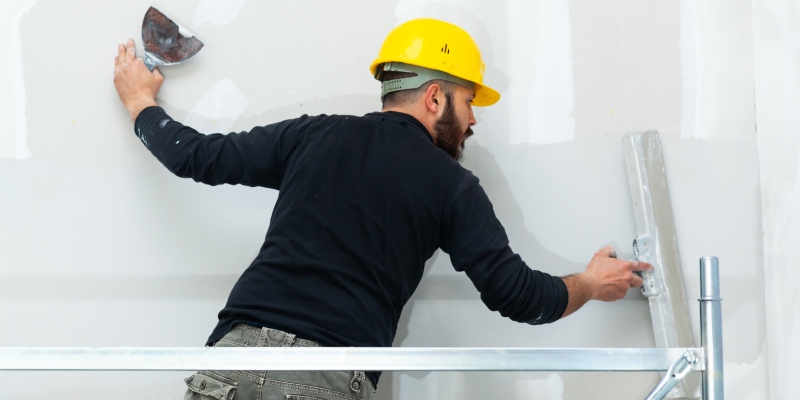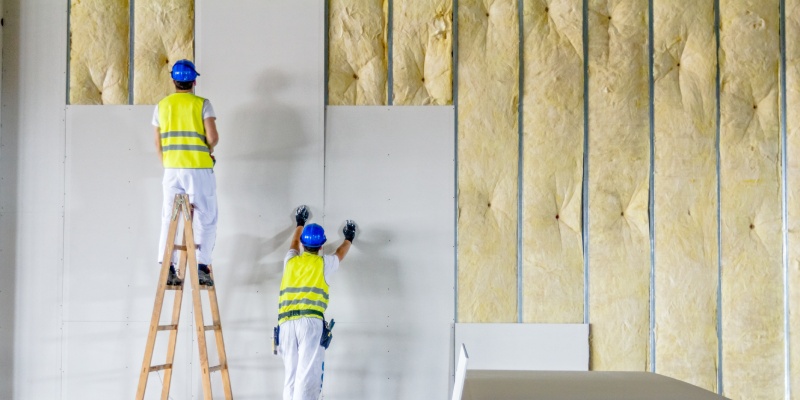Drywall surrounds us and for good reasons. It is an inexpensive wall covering that goes up quickly. It is neutral and can be covered with paint, wall paper or wood paneling easily. Other benefits include some sound proofing and insulation value.
Drywall Tips From The Pros

KEEP READING...
TOOLS
Part of the beauty of drywall is that it can be installed with a few common and inexpensive hand tools. These include a measuring tape, chalk line, utility knife, a selection of broad knifes, inside corner tool, spackle tray, key hole saw, sponge, Surform Tool, sanding pole, tin snips and drill. Additional, but not necessary tools include spiral saw, screw gun, 4-foot T-square, drywall saw, power pole sander, stilts (for ceiling work), panel lifter and power mixer.
USE SETTING COMPOUND FOR BIG HOLES
It’s fine to fill screw holes and other small wall dings with patching compound, but for dime-size and larger drywall repairs, and for holes that are deep, it’s best to use a joint compound that sets up by a chemical reaction. These are available in powder form with setting times ranging from five to 90 minutes. The reaction starts when you mix in the water, and the compound hardens in the specified time. The five-minute version is nice because you can buy the powder in a convenient 5-lb. box, and the compound hardens quickly, so you can apply another coat right away. Remember, setting-type compounds are harder to sand than regular patching materials, so make sure to strike them off flush to the surface when you fill the hole. You’ll find setting-type compounds wherever drywall taping supplies are sold.
MAKE A DENT FOR THE PATCHING COMPOUND
When you remove a nail, drywall anchor or picture hanger, there is usually a little ridge of old paint or drywall sticking out that’s hard to cover with patching material. The solution is to make a dent over the hole, and then fill the dent. Most good-quality putty knives have a rounded hard plastic or brass end on the handle that works perfectly for making the dent. The rounded end of a screwdriver handle or the handle of a utility knife will also work. Press the handle against the hole and twist it slightly while applying pressure to dent the surface, or if you have good aim, use your denting tool like a hammer.
COVER CRACKS WITH REPAIR SPRAY
Stress cracks usually show up around window and door openings. The cracks are the result of framing movement and are hard to fix permanently. But using spray-on crack repair is a good way to at least extend the life of your repair. The spray forms a flexible membrane over the crack that can stretch and relax as the building moves.
If the crack is open, fill it first with patching compound. Then follow the instructions on the can to cover the crack with the crack-repair spray. Let it dry and cover it with paint to finish the repair. You’ll find crack-repair spray at hardware stores, paint stores or online.








Leave a Reply